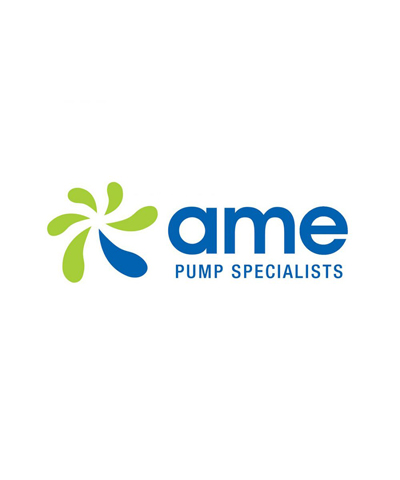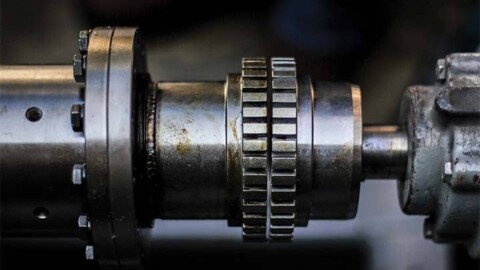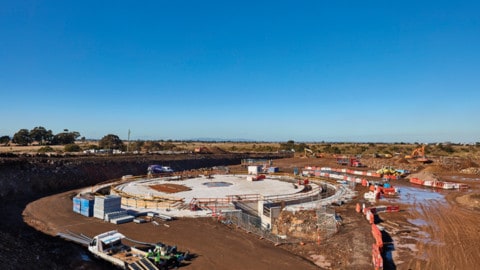Last year, South East Water completed the installation and commissioning of one of its largest pressure sewer projects to date. Installed at a greenfield industrial site in Dandenong South, the pressure sewer (which was an existing network in the area) services a truck wash, workshop and large office facilities, and needed to be able to handle the waste generated by the operations on site. Due to the size of the system, site requirements and deadline, careful design and planning was needed to ensure it was delivered successfully and on time.
South East Water’s Pressure Sewer Manager, Chris Smolka, said the greenfield site was selected by a customer as a new base of operations and they needed a sewer network capable of disposing of the wastewater generated by the truck wash and other activities on site.
Designing the system

South East Water’s Planning and Design team gathered information about the site’s purpose, expected flows and other details required from the customer to help determine tank size (allowing for 24 hours of storage) and pump requirements, as well as system design and configuration.
“We expect the truck wash on its own to generate around seven kilolitres (kL) of trade waste every day, but our sewer system is built to handle it all and much more,” Chris said.
“The system is made up of a primary vessel of 15kL, complete with a three phase duplex pump set, and an adjoining 10kL of emergency storage capacity, resulting in a total effective capacity of 25kL.
A Programmable Logic Controller (PLC) operates the system which enables constant monitoring and management by our Sewer Operations team.
“In the system design stage, a great deal of focus is placed on simplicity of operation and maximising the lifecycle of the system. When the design was finalised, a simple procurement and tender process was undertaken.
“The key factors considered when selecting a pump for this project were reliability, suitability and availability of replacement parts and pumps.”
Chris said once the design solution had been approved, the utility worked closely with the customer to meet their deadlines.
“Planning for such an installation will often require multiple site visits, additional meetings/conversations with the customer and appointing a contractor to perform the installation,” Chris said.
“Then it’s a matter of planning for the day of installation including logistics considerations, e.g. delivery time of the tank from the supplier, site safety management plan and coordinating with other trades that may be onsite.
Finally, having a contingency plan should events change such as inclement weather on the day of scheduled installation.”
Meeting project deadlines
Chris said there were some significant challenges in relation to timing and project deadlines that the team had to overcome.
“The tanks were a bespoke design, so we worked closely with the supplier to ensure the tanks would be manufactured and delivered in time. Sourcing the appropriate system controller in a quick time frame also required us to work with our suppliers to enable a solution to be delivered when needed,” Chris said.
The space constraints of the property also proved to be a challenge as well as the size of the pressure sewer installation itself.
“This was one of, if not the biggest pressure sewer installations we’ve installed, and with increased scale comes increased risks onsite which need to be proactively and reactively managed,” Chris said.
“Thorough planning was required beforehand. The available footprint for the installation was not particularly large, so our Works Supervisor and installation contractor worked closely to ensure site safety. Excavation size, spoil management and trench shoring methods were all key safety considerations.”

Monitoring the pressure sewer
As part of South East Water’s wastewater network, the utility monitors the system via the PLC and undertakes maintenance as required.
“The pressure sewer system is monitored 24/7 via the PLC that will alert our Operations Control Room if there are any issues affecting the performance of the system.
Concerns that can’t be resolved remotely will then result in maintenance crews attending site with the knowledge of what will be required to resolve any operational issues and revert back to a monitor and act approach. No proactive maintenance is undertaken,” Chris said.
A successful installation
With careful design and planning undertaken by the team at South East Water, the customer now has a safe, reliable and cost effective system to dispose of wastewater, and has a long lifecycle and low maintenance costs for the utility.
“After the installation we took the opportunity to discuss with the key stakeholders what worked well and, importantly, what could be done more safely, efficiently and effectively.
On the whole it’s been a success but some important lessons will help us continue to improve and strive for the most effective and efficient install,” Chris said.
Chris said he was really proud of the team and contractors for their hard work and commitment in ensuring they implemented this project smoothly and efficiently.
“The project was run to a very tight deadline and on top of that, this installation was on a scale not regularly encountered.
“Our employees and contractors went above and beyond to ensure a safe and effective delivery of this system. This was a testament to their care and dedication to achieving a positive outcome for the customer,” Chris said.



















